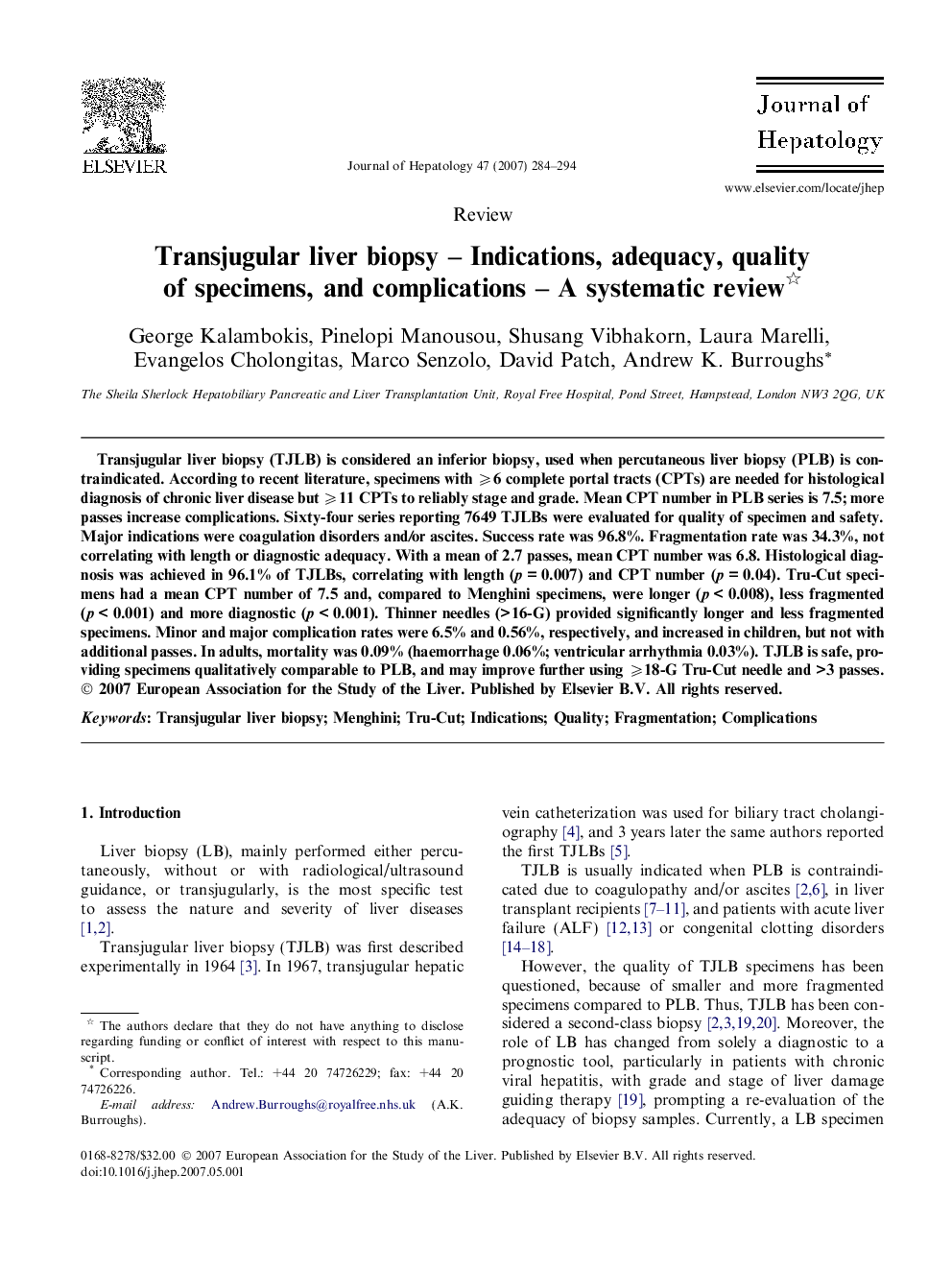| Article ID | Journal | Published Year | Pages | File Type |
|---|---|---|---|---|
| 3314660 | Journal of Hepatology | 2007 | 11 Pages |
Transjugular liver biopsy (TJLB) is considered an inferior biopsy, used when percutaneous liver biopsy (PLB) is contraindicated. According to recent literature, specimens with ⩾6 complete portal tracts (CPTs) are needed for histological diagnosis of chronic liver disease but ⩾11 CPTs to reliably stage and grade. Mean CPT number in PLB series is 7.5; more passes increase complications. Sixty-four series reporting 7649 TJLBs were evaluated for quality of specimen and safety. Major indications were coagulation disorders and/or ascites. Success rate was 96.8%. Fragmentation rate was 34.3%, not correlating with length or diagnostic adequacy. With a mean of 2.7 passes, mean CPT number was 6.8. Histological diagnosis was achieved in 96.1% of TJLBs, correlating with length (p = 0.007) and CPT number (p = 0.04). Tru-Cut specimens had a mean CPT number of 7.5 and, compared to Menghini specimens, were longer (p < 0.008), less fragmented (p < 0.001) and more diagnostic (p < 0.001). Thinner needles (>16-G) provided significantly longer and less fragmented specimens. Minor and major complication rates were 6.5% and 0.56%, respectively, and increased in children, but not with additional passes. In adults, mortality was 0.09% (haemorrhage 0.06%; ventricular arrhythmia 0.03%). TJLB is safe, providing specimens qualitatively comparable to PLB, and may improve further using ⩾18-G Tru-Cut needle and >3 passes.
